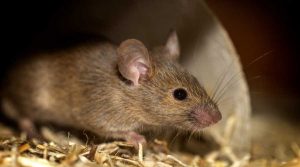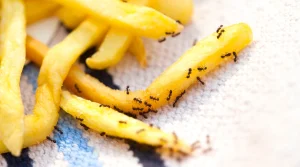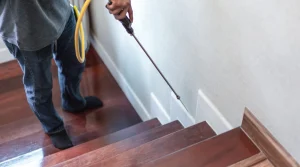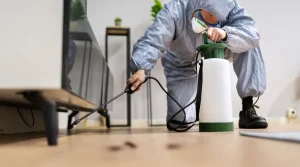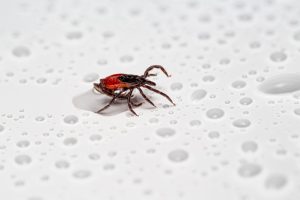Termites inflict more property damage in the United States than any other pest. We want to provide pointers on what to check for in your house if you suspect termites to save your property from becoming a statistic.
What Do Termites Look Like?
The most straightforward approach to recognizing a termite infestation is to find the termite itself. Although termites are well-known, many people must familiarize themselves with their appearance. In attempting to self-diagnose a termite infestation, you should be aware of the following significant distinctions between termites and ants:
- Color: Termites have lighter colors than ants, ranging from creamy white to a brownish tone, as opposed to ants’ deeper browns and blacks.
- Termites usually are 18 to 1 inch in length. In reality, the queen of a colony may have a big stomach and grow to be 6 inches long, making her the size of the most common termite caste.
- The most significant distinction is seen in body type. Ants have tiny waists, but termites have large cores. Also, they vary from ants by having straight antennae instead of the latter’s curved appearance.
- As you can see, termites seldom have wings, but when they do, they have two pairs of the same length. Ants have two sets of wings that vary in size.
What Are The Different Types Of Termites?
Even though more than 45 species of termites are in the US, they usually fall into one of three categories. Its categorization is mainly based on how it looks, where it nests, and how it behaves. The following three termite species are the most prevalent:
Subterranean Termites
Subterranean termites, the most common termite, live in soils throughout the continental United States. Since they build the enormous nests of any termite species, they are the most common source of damage to houses and other property. These termites will construct mud tunnels under your yard to get to your home’s delectable wood, which acts as their food supply.
Drywood Termites
Drywood termites, as the name implies, like to live in dead or dying dry wood, such as dead trees, structural beams, or solid hardwood flooring. Keep an eye out for them on and around your property since they will go to great lengths to avoid dirt. Although they are more significant than their underground cousins, their colonies are smaller, allowing them to harm more slowly. However, they are still a substantial threat to your house.
Formosan Termites
The most dangerous termites are, without a doubt, Formosan termites. They are tough to remove once trapped because of the broad passageways between their nest and food supply. They may even establish temporary stores in high-traffic places, like your house, and even if you remove any nests in your home, the top nest will stay.
Do Termites Have Wings?
The primary explanation is that termites have wings. Before you start visualizing swarms of flying termites devouring your home, it’s important to note that only a few castes of termites have wings, and even then, they can only fly during certain seasons of the year. Alate nymphs, often known as termite swarmers, are the only termite caste with wings in a colony.
Signs of a Termite Infestation
Considering the level of termite damage, it is simple to see indicators of a significant termite infestation if you know what to look for. The following are the most prevalent indicators of a termite infestation:
- When you passed through the hollowed-out wood, you could hear it.
- Blisters on your oak floor seem like little air bubbles.
- There will be pellets or droppings that look like coffee grounds.
- They have ant-sized wings or bodies.
- Mud tubes are tubes that may be found outdoors or in your crawlspace.
Are Termites Dangerous to Humans?
While termites may significantly damage your home, they pose no danger to you or your family other than the potential of the building falling on top of you. They seldom attack or sting people unless provoked, and they do not transmit any potentially fatal diseases.
What Attracts Termites to My House?
Termites, like many insects, are primarily hunting for food. Since wood is their primary food supply, homes seem very appealing to them. Wetness also appeals to termites—moisture in wood, damp places in the house, and any outward fissures. Termites like warm temperatures; therefore, the spring, early summer, and fall seasons are the most susceptible to termites. When you combine the heat and humidity, it’s easy to understand why the south is the termite capital of the United States.
How to Prevent Termites
Termite prevention is usually preferable to eradication since it saves money in the long run. Termite prevention tips include:
- Keep exterior plants away from home, especially tree branch growth. Ensure no vegetation or foliage contacts the house to prevent subterranean termites from spreading from your yard to your home.
- Keep your foundations dry, whether composed of wood, concrete, crawlspaces, or another material. To detect possible moisture concerns, look for places that regularly stay wet during heavy rain or flash floods.
- Remove all yard debris regularly – Keep all yard waste away from the house, such as mulch and fallen leaves. It would help if you achieved this by cleaning your gutters regularly.
- Keep a watch out for flying termites during the swarming season since they are the ones that breed, so keep them away from your property. Close your windows, turn off your lights at night, and inspect your house for gaps if you see them flying about.
How to Get Rid of Termites
You’ve probably made it this far. Already know a lot of stuff and want to know how to remove those pesky termites from your house. Although we would always encourage expert assistance, mainly because there may already be significant termite damage in the property, there are several things you may do on your own:
- Termite products – Although the efficiency of the many termite removal techniques on the market varies, they all operate to eradicate termites. Regarding products, you may pick between spot treatments and bait treatments.
- Beneficial nematodes are tiny parasitic roundworms that attack and destroy termites in a few days.
- Orange oil and neem oil are two essential oils that may help termites die by interfering with their shedding cycle or egg-laying, among other things.
- Boric acid is a well-known way of killing termites since it disrupts their ecology.
Hopefully, you’ve learned how to spot termites and protect your property from termite infestations. For all of your termite removal requirements, we suggest contacting the pros at Poway-pest-control.com.


